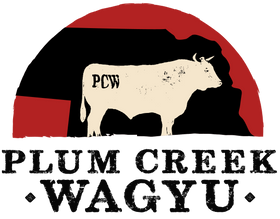Mastering the Perfect Wagyu Steak at Home: A Step-by-Step Guide
Cooking Wagyu steak at home is an experience that elevates any meal into something extraordinary. With its rich marbling and tender texture, Wagyu beef requires a bit of care and attention to detail to truly shine. Whether you’re a seasoned chef or a beginner in the kitchen, this guide will walk you through the steps to cook the perfect Wagyu steak—right in your own home.
Step 1: Choose the Right Cut
The first step in mastering the perfect Wagyu steak is selecting the right cut. Some of the most popular cuts for cooking at home include:
- Ribeye: Known for its rich marbling and tender texture.
- Striploin: A leaner cut with excellent flavor and texture.
- Filet Mignon: The most tender cut, perfect for a melt-in-your-mouth experience.
Wagyu steaks come in a range of marbling levels, so choose a cut that suits your taste preference. Higher marbling results in a more buttery texture, while leaner cuts still offer the characteristic Wagyu flavor.
Step 2: Prepare the Steak
Before cooking, it’s important to let your Wagyu steak come to room temperature. Take the steak out of the fridge at least 30-45 minutes before cooking. This ensures even cooking and prevents the steak from becoming tough.
Season the steak simply with salt and pepper. The natural flavor of Wagyu beef is so rich that it doesn’t need heavy seasoning—just a light hand with salt and pepper will bring out its best qualities.
Step 3: Preheat Your Pan or Grill
Wagyu steak is best cooked quickly over high heat, which helps to sear the outside while preserving the rich marbling and tenderness. Whether you're using a cast-iron skillet, grill, or stovetop griddle, make sure it's preheated to a high temperature.
For a skillet, use a heavy cast-iron pan to achieve an even, intense sear. If you’re grilling, make sure the grill is hot and ready.
Step 4: Cooking the Steak
For the perfect Wagyu steak, we recommend the following general guidelines:
-
For a 1-inch thick steak:
- Sear each side for about 2-3 minutes.
- Depending on your preferred doneness, finish it in the oven at 400°F for 2-4 minutes for medium-rare.
The marbling in Wagyu beef melts quickly, so be mindful of not overcooking. It’s best to aim for medium-rare or medium doneness to allow the fat to render and provide that melt-in-your-mouth experience.
Step 5: Rest the Steak
Once cooked to your desired level, remove the steak from the heat and let it rest for 5-10 minutes. This step allows the juices to redistribute, ensuring a tender, juicy steak when you cut into it.
Step 6: Slice and Serve
Wagyu steak should be sliced against the grain to enhance tenderness. Serve with your favorite sides—grilled vegetables, mashed potatoes, or a fresh salad—and enjoy the luxurious, melt-in-your-mouth flavor that only Wagyu can offer.
Pro Tip:
For added flavor, finish the steak with a light drizzle of Wagyu fat or a touch of truffle butter to complement the rich marbling.
At Plum Creek Wagyu, we pride ourselves on offering premium cuts of Wagyu beef that will elevate any dining experience. Follow this guide, and you’ll be cooking Wagyu like a pro in no time!
🔥 Ready to try the perfect Wagyu steak at home? Explore our selection of premium cuts at Plum Creek Wagyu today!
Related Posts
Sustainability in Wagyu Ranching: How Plum Creek Wagyu is Committed to the Environment
Explore how Plum Creek Wagyu is committed to sustainability with practices like rotational grazing, water conservation, humane treatment of cattle, and more. Learn about our efforts to produce high-quality beef while protecting the environment.
Wagyu Beef vs. Angus Beef: A Flavor Showdown
Discover the differences between Wagyu beef and Angus beef in this comprehensive showdown. Learn about flavor, texture, and the overall eating experience to determine which premium beef is right for you.
Wagyu Beef Recipes for Every Season: From Summer Grilling to Winter Braising
Explore seasonal Wagyu beef recipes perfect for any time of the year. From summer grilling to cozy winter braises, discover easy and delicious ways to incorporate premium Wagyu into your meals.
Health Benefits of Wagyu Beef: Why It's a Premium Choice
Discover the health benefits of Wagyu beef, from its heart-healthy monounsaturated fats to its higher levels of omega-3 fatty acids and CLA. Learn why Wagyu beef is a premium choice for those seeking a flavorful yet healthier alternative to traditional meats.
Pairing Wagyu Beef with Wines: A Guide to the Perfect Match
Discover expert tips on pairing Wagyu beef with the perfect wines. From Ribeye to Filet Mignon, explore the best wine matches to elevate your dining experience and make every bite of Wagyu beef unforgettable.
The History and Origins of Wagyu Beef: From Japan to Nebraska
Explore the rich history of Wagyu beef, tracing its origins from ancient Japan to the modern-day farms of Nebraska. Learn about the unique breeding practices and cultural significance of Wagyu, and discover how Plum Creek Wagyu brings this exceptional beef to your table.








